Summary
- 1) 1. Explore the Great Wall of China
- 2) 2. Visit the Forbidden City in Beijing
- 3) 3. Experience the Terracotta Army in Xi’an
- 4) 4. Cruise the Li River
- 5) 5. Wander the Bund in Shanghai
- 6) 6. See Giant Pandas in Chengdu
- 7) 7. Trek Zhangjiajie National Forest Park
- 8) 8. Experience Tibetan Culture in Lhasa
- 9) 9. Try a Chinese Cooking Class
- 10) 10. Cycle Around West Lake
- 11) Tips for Traveling to China
- 12) Conclusion
- 13) Frequently Asked Questions
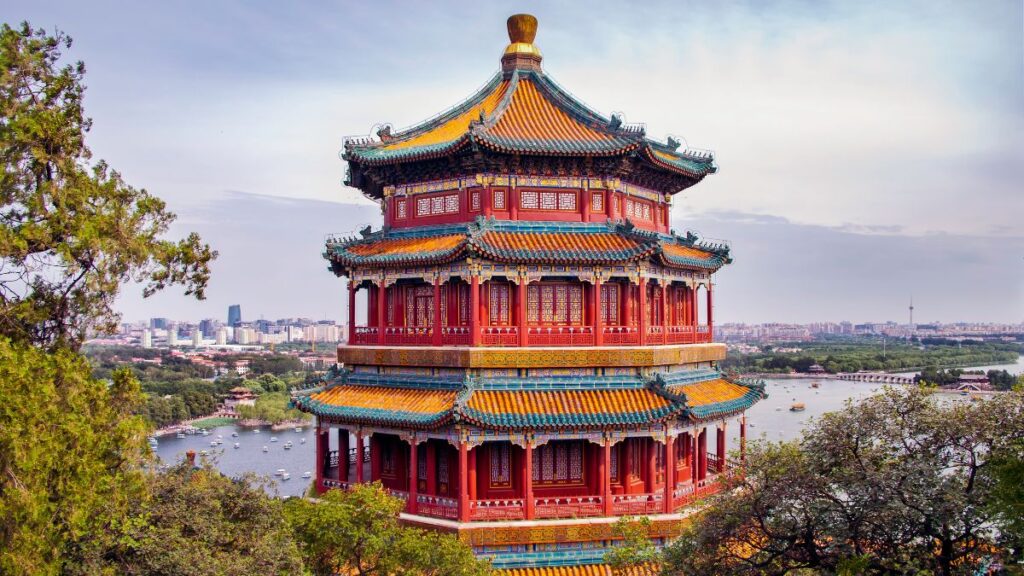
You come across all kinds of unique attractions to do throughout China, from trying night market street food to walking the Great Wall. The country marries ancient tradition with modern urban existence, flaunting hundreds of years of history in its bustling streets and quiet villages.
Each site provides an opportunity to connect with the locals, sample new cuisine and uncover their way of life. This article “10 Unforgettable Experiences to Try in China” will help you select the top experiences worth your time.

1. Explore the Great Wall of China

Exploring the Great Wall of China – real adventure, not just sightseeing. Hike places like Mutianyu or Jinshanling for exposed trails, stone steps, and panoramic views spanning ridges. Capture images of watchtowers, craggy hills and endless sky.
Every stretch, whether it’s Simatai or Gubeikou, offers a fresh perspective, some untamed, some renewed, all rich with tales. Vendors provide local snacks and a slice of life along the way. This famous destination, part of the new Seven Wonders, stretches over 21,000 kilometers, showcasing Chinese workmanship and offering a truly memorable travel experience. With its perfect location nestled in China’s dramatic landscapes, the Wall delivers new history with every step—undoubtedly one of the 10 Unforgettable Experiences China offers to any traveler.
2. Visit the Forbidden City in Beijing
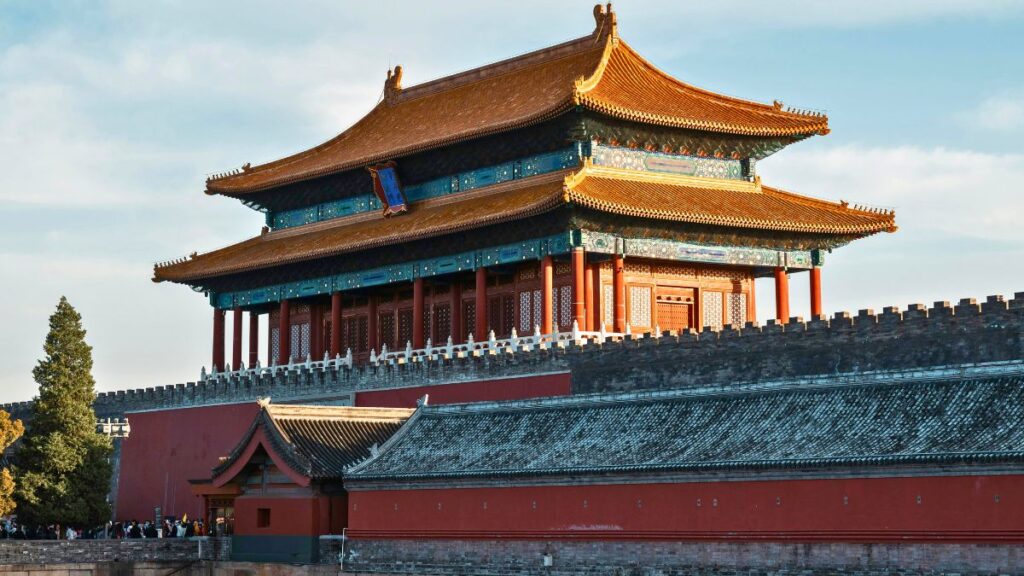
If you visit the Forbidden City, you’ll have the opportunity to roam 180 acres of imperial halls, gardens and 980 ancient Chinese buildings. You encounter dragon-carved colorful roofs, courtyards designed for ceremony, and walls you can climb to overlook expansive city views.
Every corner reveals glimpses of China’s imperial history, from the emperors’ rites to the everyday lives of the palace servants. Guided tours assist you in finding out more, as most signs are Chinese. Weekday mornings or late afternoons in spring or autumn are best because they bring smaller crowds and better weather.
This UNESCO World Heritage Site stands among the world’s most famous destinations, offering a deep cultural journey into the dynasties that shaped China. It’s one of the great cultural treasures of the world.
3. Experience the Terracotta Army in Xi’an
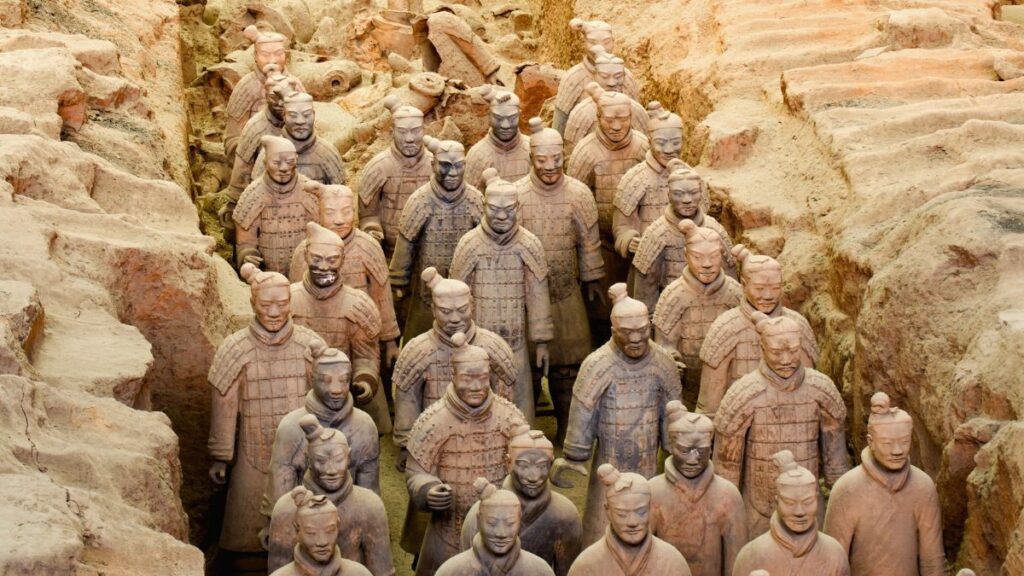
What sets the Terracotta Army in Xi’an apart are its thousands of life-sized clay warriors — each with distinctive faces and hairstyles.
At the museum, you encounter 3 main attractions or pits—with Pit 1 being the largest, crammed with soldiers and horses arranged in battle formation. You even get to walk past active excavation sites, where archaeologists are still at work, and catch glimpses of original paint on some figures.
Exhibits describe how the army was built to protect Emperor Qin Shi Huang’s tomb more than 2,200 years ago. Two to three hours here provides you an in-depth glimpse at ancient Chinese armies and their formation. As one of China’s most famous World Cultural Heritage sites, the Terracotta Army delivers amazing displays and is often a highlight of any Xi’an tour, featuring architectural treasures unlike anywhere else in the world.
4. Cruise the Li River

Cruise the beautiful Li River provides you a front-row seat to China’s most iconic 100 ft tall karst peaks — a scene you could see on a 20-yuan bill. Beginning in Guilin, you glide by water buffalo, rice paddies and small villages for approximately 4 hours to Yangshuo.
Several visitors come for the striking landscapes, where lush mountains tower over magnificent valleys and winding waters. Spring offers mist above the hills, and Fall displays jagged, green peaks against a blue sky.
You can go basic with a 3-star boat or choose a 4-star for extra comfort. Others trade the boat for a bamboo raft or or try Li River hiking when crowds surge between May and October.
5. Wander the Bund in Shanghai
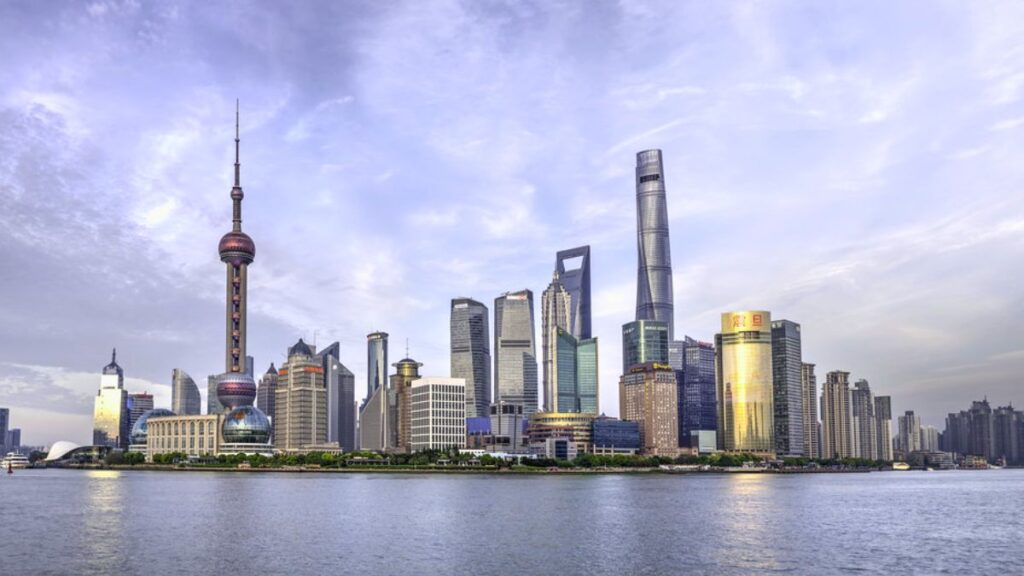
The Bund, known as the Waitan, is quite simply one of Shanghai’s most interesting places to explore. There are colonial buildings along the river and skyscrapers in the background. It stretches from East Yan’an Road to Waibaidu Bridge, right alongside the expansive Huangpu River views.
Most tourists here linger for at least three hours. At night, the modern skyscrapers illuminates around 6 p.m. Glows until late. It’s a great place to observe local life with many locals meeting here, some doing tai chi or group dances. The sunset view attracts crowds every day, and the exquisite design of old-meets-new makes this one of the city’s key attractions.
6. See Giant Pandas in Chengdu

Next up, visiting China’s giant pandas in Chengdu provides you a rare, close encounter with China’s cutest national symbol. At places like the Chengdu Research Base of Giant Panda Breeding, you get approximately 120 giant pandas – including playful cubs – and 76 red pandas.
Walkways are frequently crowded, particularly during high season. Early arrival means you bypass most of the crush and get to see pandas chomp bamboo groves or frolic in the courtyard before their afternoon naps.
For an immersive experience, the Panda tour through the Panda Loving Care course allows you to take part in care duties over 1 or 2 days, removed from the bulk of visitors. It’s one of those quintessential travel experiences you won’t forget — and an iconic landmark for animal lovers. Some tour guides even help you navigate the area for the best photo spots and scenery.
7. Trek Zhangjiajie National Forest Park

Trekking Zhangjiajie translates to winding through mountainous terrain between 200 meter sandstone pillars, those very ones you marveled at in ‘Avatar’. The paths wind steep and narrow and some, such as the 999 steps, stretch your stamina to their magnificent height.
Spring and Autumn bring mild weather and lighter crowds, making it an ideal tourism trek. Huangshizhai requires either a cable car or a strenuous day hike, but the peak boasts views of the entire park.
Highlights include Ten-Mile Gallery and Tianzi Mountain. Both showcase scenic areas worth the effort, plus Golden Whip Stream’s 7.5 kilometers of green valley. Fitness counts : hiking is hard, but the natural scenery, flora, and cultural experiences compensate every step.
8. Experience Tibetan Culture in Lhasa

Next, Lhasa provides you with an authentic experience of Tibetan culture, truly one of Tibet’s highlights. The Potala Palace looms with its assertive walls and rich reds and whites, offering a grand display of centuries of Tibetan history and one of the top tourist attractions in the region.
At Jokhang Temple, locals and travelers walk the Kora, spinning prayer wheels and soaking up the meditative mood. Barkhor Street is alive with people drinking sweet tea and telling tales, nestled within the traditional villages of old Lhasa.
Sera Monastery, one of the most famous monasteries, throws open its courtyards for lively monk debates. It’s a real highlight of many Tibet tour packages. Dress simply in Lhasa as a sign of cultural respect, and sample local fare such as Tibetan noodles to really connect with the beautiful countryside and spirit of the region — a must for any China-Tibet traveler.
9. Try a Chinese Cooking Class

In addition, a Chinese food cooking class allows you to learn hands-on skills from local chefs. You can attempt making dumplings, wrapping them by hand… Or slicing thick biang biang noodles, a highlight for any China trip !
Others bring you to frenzied spice markets to select star anise or fresh ginger. Learn to crush chili with a traditional mortar just as cooks did centuries ago, experiencing authentic Sichuan cuisine up close.
Whether at a courtyard or home kitchen, you get to hear about why longevity noodles are important on birthdays or why certain spices appear in famous China eating spots or famous spots across the region.
10. Cycle Around West Lake

Cycle around West Lake after which, cycling around West Lake carries you along a tranquil and picturesque path through one of China’s most adored locations for a sightseeing trip. You come across classical exquisite gardens and willow trees, with oriole’s songs in spring.
The southeast path is dotted with golden meadows and flowering plants, which bloom particularly in Spring and Autumn, when the weather remains cool. It’s easy to rent a bike. Public rentals dot the lake, so you just grab one and go for a cycling tour.
The four kilometer trail remains fairly level, however, you do contend with cars on the road, so remaining vigilant is wise. Along the way, you can enjoy peaceful mountain views and a relaxed cultural walk.
Tips for Traveling to China
Knowing there are convenient options when you’re far from the airport. You’ll require a visa for entry, and venues primarily accept digital payments such as Alipay or WeChat Pay, therefore establish those prior to your trip.
Employ menu/street sign translators. Public transport is extensive and time saving, but hold cash for taxis in minor towns.
Never drink tap water, always buy bottled water. Immersive Respect local customs and attempt to pick up a few simple mandarin phrases.
Stay Connected in China with an Ubigi eSIM data plan
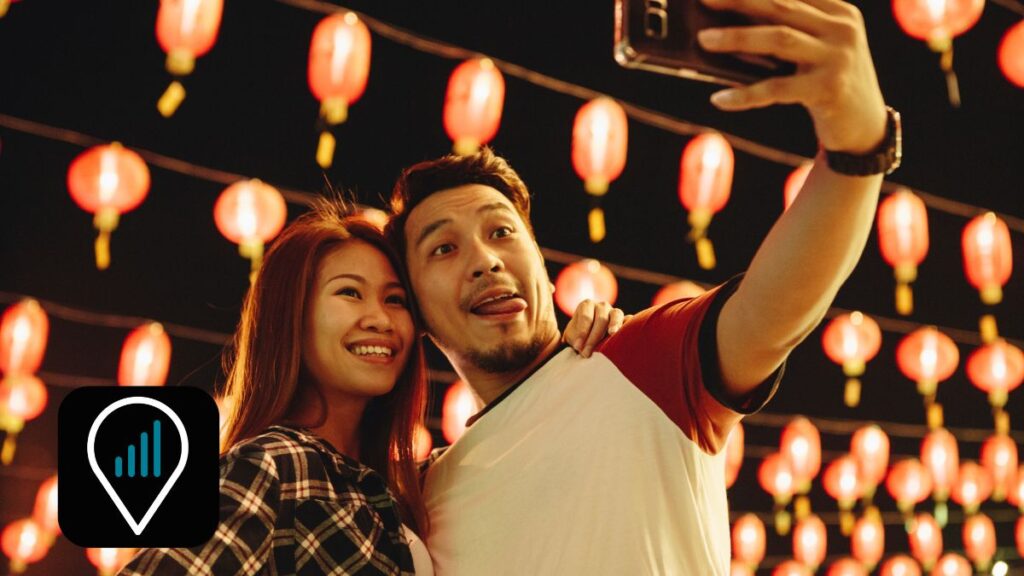
There are not always easy ways to get maps, translation or travel sites when you visit China, especially if you’re on a long trip exploring places like Hangzhou, Yunnan, or Henan. Their internet blocks a lot of the common sites and apps which will get in your way.
Don’t lose your connection in China ! Stay connected with an Ubigi eSIM data plan for China and get consistent mobile data from touchdown. Need to look up Beijing metro routes, or use a translation app in Shanghai, or check tourist info in Xi’an?
For travelers heading to China, Ubigi offers a range of flexible prepaid eSIM data plans tailored to various needs:
- 3GB Data plan: Ideal for short trips under 5 days or light users.
- 10GB Data plan: Ideal for a two-week trip or to do tethering with other devices
- 25GB Data plan: Ideal for a month-long trip or for a couple doing tethering for a two-week trip
- Unlimited Data plan: Suitable for those who need extensive usage, with a Fair Use Policy applying.
Installation is fast. Download the Ubigi app, create your account and pick your data plan in the catalog. Install then your eSIM and activate it in your data parameters. It instantly works on eSIM compatible phones. You skip local SIMs and language challenges.
Manage the Chinese language
Navigating in China becomes so much easier when you handle the Chinese language. Translation apps such as Google Translate or Pleco assist you with reading menus, signs and conversing with locals. Other apps display text in both Mandarin and your language to accelerate the process.
Learning some easy words like “ni hao”, “xie xie” or “duo shao qian” goes a long way in markets or in taxis. A few quick answers or hellos can open doors and grease the wheels of everyday life.
Payments in China
Mobile payments influence the way you shop, dine or travel in China. WeChat Pay and Alipay are ubiquitous, from major malls to minor street vendors. You scan a QR code, enter the amount, and pay in seconds.
Even taxis and vending machines accept these apps. Setting one of these apps up is simple if you’ve got an international card, but not all cards are accepted, so verify before you travel.
Most places are cashless payments only, but some still do cash. A little Yuan on you is helpful if your app or card fails.
Transports in China

Additionally, Chinese high speed trains connect urban centers at a very fast and convenient pace. There, you go from Beijing to Shanghai, more than 1,300 kilometers, in about five hours. These trains run frequently, with pristine seats, LCD screens and hush cars for napping.
It’s easy, and offers you lots of choices, to book tickets online. For short journeys, city metros are quick and transparent, with signs in Chinese and English. Taxis and ride apps, such as Didi, are convenient in both big and small towns. Both choices maintain your journey fluid for work or play.
Cultural Etiquette in China
Cultural etiquette in China is about immersion and respect for local customs. It’s what defines your experience. Temples require visitors to dress with shoulders and knees covered and to keep their voices down.
When proffering or receiving something, such as a business card or a cup of tea, use both hands. In the countryside, always welcome the elders first and refrain from finger-pointing.
Observe requests to take shoes off before entering homes or temples. For instance, in certain villages, hosts offer tea prior to discussing business as a gesture of respect.
Conclusion
That’s the wild mix you get in China. Climb old stone steps on the beautiful Great Wall. Float on the emerald river surrounded by steep cliffs on either side. Stroll through bustling city avenues with flashing lights all night long. Get close to pandas. Sample hand-pulled noodles.
Every day seems new and intrepid. You encounter old and new together. The cuisine introduces new flavors. The people bring fresh new ways to say hello and give. You discover more than sights–each detour delivers you a tale.
We hope this “10 Experiences to try in China” article will help you planning your trip! Choose your must-stops for an awesome adventure and cross off your China bucket list. Reserve your Ubigi eSIM data plan to stay connected during your adventures. China’s got a lot for you, magnificent structures and remarkable landscapes. Go discover what resonates with you!

Frequently Asked Questions
What is the best time of year to visit China?
The optimal seasons to travel to China are spring (April-May) and Autumn (September-October). Less crowds at the attractions and nice weather.
Do I need a visa to travel to China?
Unless you’re from one of the few exempt countries, most travelers require a valid China visa to enter China. Confirm with the Chinese embassy or consulate in your country for your nationality-specific requirements.
Can I use my usual mobile data in China?
Most global mobile plans are useless in China. For dependable web, you can snag an Ubigi eSIM data plan. That keeps you connected with ease on the road.
Is it easy to travel in China without speaking Chinese?
You can get around in China without speaking Chinese, knowing some basics or having translation apps will go a long way. There are English translations on many signs in the big cities.
What payment methods are accepted in China?
Mobile payments such as Alipay, WeChat Pay are most common. Few places take credit cards, but cash is less utilized. Get ready for Alipay and verify your cards work in China.
How safe is it to travel around China?
China is quite safe. Exercise common sense precautions. Keep an eye on your stuff, take official taxis.
Are vegetarian or vegan options available in China?
Yes, food for vegetarians and vegans is available in most cities. Make sure you learn to say your preferences in Chinese or at least pull one of these handy translations up for a waiter – for the better choices.









 How to check eSIM compatibility
How to check eSIM compatibility How to check carrier unlocking
How to check carrier unlocking